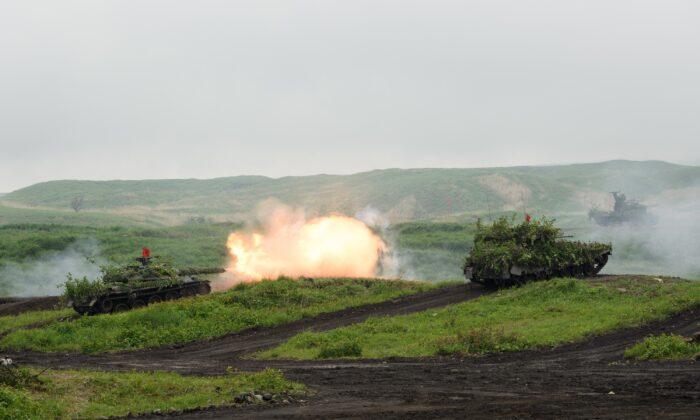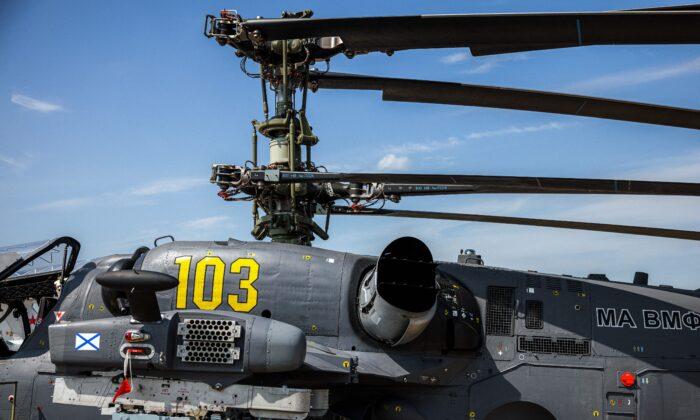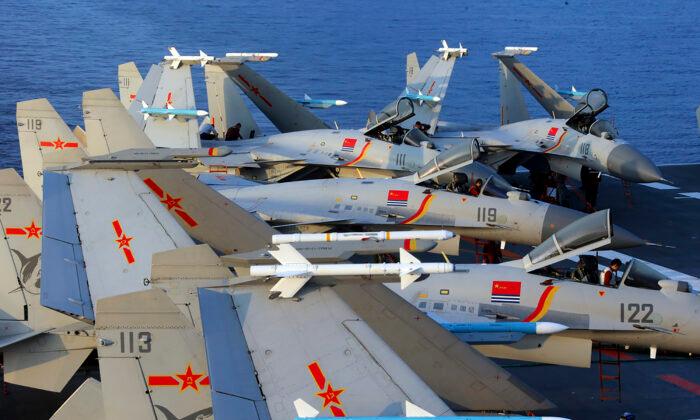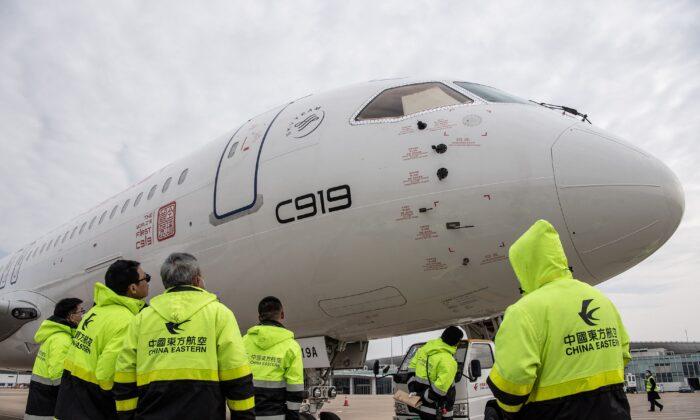In recent summits of Western nations, two shots were fired over the bow of China. At the Group of Seven (G-7) forum held in Cornwall, England, in early June, the leading Western economic powers announced a new international infrastructure initiative, intended to draw lower-income nations away from China’s burgeoning Belt and Road Initiative (BRI).
This action was quickly followed up by the NATO summit held in Brussels a few days later, which in its official communiqué issued a dark warning about China’s military modernization. For the first time, NATO singled out China for its “assertive behavior,” which it said presented “systemic challenges to the rules-based international order and to areas relevant to Alliance security.”
In particular, NATO noted China’s nuclear arsenal, which it said was “rapidly expanding,” with “more warheads and a larger number of sophisticated delivery systems,” intended “to establish a nuclear triad” comprising land-, sea-, and air-based systems.
So what is behind China’s current nuclear modernization efforts? In fact, it is more than just a quantitative and qualitative buildup; it has grave implications for how China is changing its fundamental attitude toward the role of nuclear weapons and under what circumstances it might “go nuclear.” More critically, it is likely that even the Chinese Communist Party (CCP) has not fully thought this out, which could be disastrous for all involved.
For China, “going nuclear” was major political, as well as technological and military, achievement. Beijing detonated its first atomic (fission-type) bomb in 1964, followed by the test of a thermonuclear (fusion-type) device three years later. Given the relatively backwards state of China’s defense science and technology base at the time, these feats, along with the launching of China’s first satellite in 1970, were a source of considerable national pride.

Despite the success of its “two bombs and one satellite,” Beijing faced the problem of what to do with its new-found nuclear capacity. It could never hope to match the nuclear might of the United States or the USSR. Nevertheless, there had to be a strong strategic rationale for possessing—and possibly using—nuclear weapons.
The answer was “minimum deterrence.” According to the doctrine of minimum deterrence, China need only possess a nuclear force capable of surviving and retaliating to an enemy’s first strike. This meant a limited but durable second-strike nuclear force that would deter nuclear blackmail and also be compatible with the defensive-oriented doctrine of People’s War.
Starting in the 1990s, the CCP refined its nuclear policy, putting greater stress on sufficiency and effectiveness in order to ensure that China would still be able to inflict a damaging retaliatory second strike. Nuclear forces were still limited in size, but increased emphasis was on the survivability and reliability of these forces.
This new “dynamic minimum deterrence” initially meant an increase in the number of nuclear weapons, to perhaps 400 warheads. This strategy also entailed a significant expansion in the types of new delivery systems. In the first place, the number of ICBMs grew to around 55 to 65 missiles, most of them advanced, road-mobile and solid-fueled systems capable of hiding from enemy attacks as well as firing on short notice. The best of these are the DF-31A and DF-41, both of which are capable of reaching the U.S. mainland.
To this arsenal must be included dozens, if not hundreds, of nuclear-armed short-, medium-, and intermediate-range ballistic missiles, which could target Japan, Taiwan, and Guam.
In addition, China finally acquired a reliable sea-based nuclear deterrent, with the acquisition of the Type-094 SSBN. Each Type-094 is armed with a dozen 4,600-mile-range JL-2 submarine-launched ballistic missiles (SLBMs). At least six Type-094 SSBNs have been launched, and Western observers expect the PLA Navy (PLAN) to eventually acquire 12 SSBNs in all.
Finally, the PLA Air Force (PLAAF) operates several aging but upgraded H-6 bombers, capable of dropping nuclear bombs or firing air-launched nuclear-tipped cruise missiles. The PLAAF is currently developing a new long-range strategic bomber, which would almost certainly be stealthy and nuclear-capable.
As China continues to build more and better strategic weapons—including multiple independently targetable (MIRVed) warheads and even hypersonic weapons—Beijing is close to perfecting an air-sea-land nuclear triad like that of the United States or Russia.
China has demonstrated the ability to develop and build better and more nuclear weapons, along with an expanded array of delivery systems (SLBMs, road-mobile ICBMs, MIRVing, etc.). The question, therefore, is what does the CCP plan to do with this growing and increasingly sophisticated nuclear arsenal? In many respects, it goes far beyond “minimum deterrence” (and even “dynamic minimum deterrence”) and is instead beginning to look a lot like a first-strike capability.

This uncertainty about what Beijing actually wants to do with its nuclear forces, combined with the general atmosphere of either opacity or outright hostility on the part of Beijing and the CCP, is not a good recipe for stability. It makes it even more difficult to trust China regarding its overall strategic goals.





